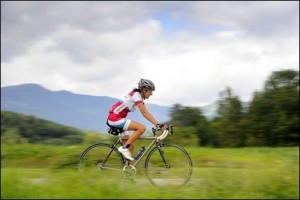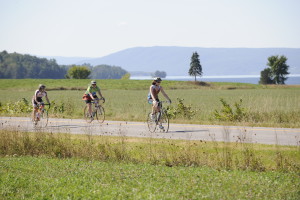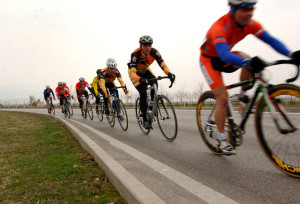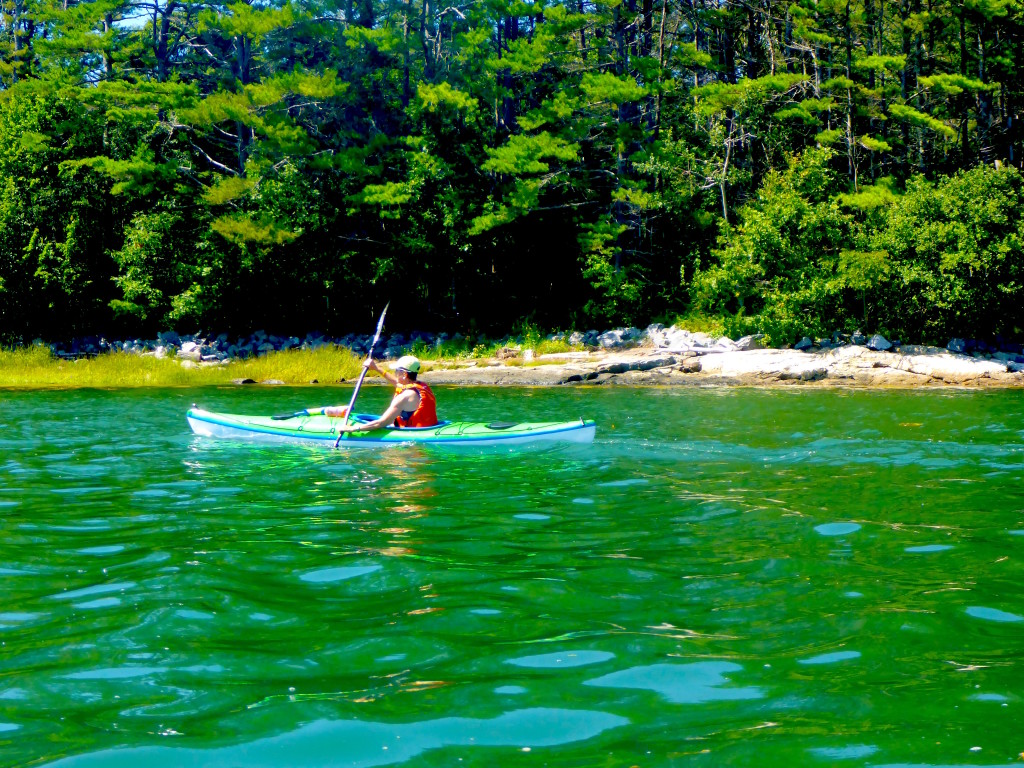When it comes to the measure of a wheel chair, stroller, tractor, horse, cyclist or pedestrian against a vehicle that carries passengers, tools, gravel or freight, there’s clearly no contest.
TAKING THE LEAD FOR SAFETY ON THE ROAD
On Sunday, September 13, I sat down with a cup of coffee and the Rutland Herald & Times Argus. Mike Smith’s Commentary entitled “My friend Tim” grabbed my attention. Oh man, I thought, here we go again. Another cycling story. Another cycling fatality. Is it hopeless? Is this ever going to go away? Will I ever get on my bike without thinking a dark thought about the end of my ride?
The answer to each of these questions is probably NO.
Smith spoke eloquently. Of the four cycling fatalities here in our Vermont this season, and that of his close friend, Tim, Smith drew three conclusions, three lessons, three positive actions to be taken. One was a no-brainer, something we know all too well and still fail to do. Say I love you and say it now.
A second was to pursue safety more aggressively and in doing so recognize the vulnerability of those inadequate to receive the force of a collision with a vehicle.
His third point forced me to write yet another editorial on pedestrian and cycling safety in this, our own small, very small, piece of the world. “Someone needs to stand up and lead,” Smith said. Well, yes. Oh so many of us support efforts to make our streets and roads safer for every user, but who is taking the lead? Are we simply saying “Yes, of course, something needs to be done, this is so sad, this is scary, this is tragic…” then wring our hands and walk away? Who will take the lead? Will you?
We live in a generous, blended community. The day before reading Smith’s story, I had the privilege of participating in the Kelly Brush Century Ride out of Middlebury. We rode 100 miles across farmlands, along the Lake, through Panton, Vergennes, and Ferrisburg, past Mt. Philo, into Hinesburg, beside the Shelburne Museum and Wake Robin, back along the Lake, over Ferry Road, and making our way arduously back to Middlebury passing railroad tracks, highways, cows, even a curious horse walking down the middle of a country road. In so doing we cycled evenly through an enormous swath of people and lifestyles, culture and education, survival and affluence, and beauty.
Interestingly as I pedaled and often labored, I took particular notice of those helping us safely manipulate what could have been dangerous cross roads. The ride was well organized and those who assisted along the way did so with what I found to be surprising involvement. I was particularly struck by law enforcement officers, stationed for long hours on the road to stop traffic for a group of cyclists (boring, right?), who smiled, offered words of encouragement and even thanked us for doing what we were doing, riding to raise funds for a worthy cause. Very nice.
Motorists, with a few exceptions, were polite, curious, and cheerful.
We’re getting there. More often than not I find awareness creeping into the scene. Distracted drivers are quickly becoming the most dangerous drivers on the road. It’s not all about alcohol, drugs and talking on cell phones, though those are unquestionably murderous factors. Fatigue, medication, and simple daydreaming also come into play.
When a motorist maintains speed and shaves close to a cyclist or pedestrian, does he or she do so out of meanness or is that motorist just “out to lunch?”
Of course there are deliberate violations: the beverage cans hucked out the window at someone on the side of the road, the dump truck speeding by too close for comfort, the oncoming driver who lays on his horn when a courteous driver moves over a little.
Anecdotal evidence suggests that as a driving community, we are sharing the road more graciously. Perhaps more drivers are cycling, running or walking. Perhaps all that is written, spoken and urged is being heard.
Infrastructure is becoming a lead player in the efforts to make roads and streets safer for everyone. Earlier this year I wrote about the “11’ rule” that is being adopted in some areas. When roads are being built or repaired, the side line is uniformly marked 11’ from the center.
Have you driven on a road with rumble strips? How about the center lines that cause tires to shudder and whine? These get our attention. Is capturing attention what it’s all about?
There are states and countries with a better track record when it comes to road safety. Is it that those cultures include more use by non-motorists? Is it speed limits, shoulders, bike lanes or crosswalks?
REPORT FROM FRANCE
Andrew McCullough from Montpelier is currently living in Brittany, France in his second season racing for a Division 2 National French team. He speaks passionately and from experience about cycling safety, spending between 2 and 7 hours on the road daily. Cycling is his sport, his job, and his life.
What follows are excerpts from an email I received from McCullough earlier this summer following yet another Vermont fatality.
“ It seems like the dialogue that exists in addressing this issue is stuck in a repetitive cycle, and I want to avoid just repeating everything that has already been said.
With that, I do have a few thoughts that directly compare the driver-cyclist relationship in Vermont and Brittany, France. I am fortunate enough to have lived here now for two years, so I think I have a realistic image of what to expect from my interaction with cars.
This is not an exaggeration; in the two seasons I have been here I can count on two hands the number of times that I have had a bad experience with a vehicle. And in most cases this was only an angry honk.
When I hear about an incident back home involving a car and cyclist, it is tragic to say the least. The dialogue that follows though is even more heartbreaking. The dialogue that I hear afterwards adopts a tone, whether directly or indirectly, that suggests cyclists are taking up too much space on the road and are a basic annoyance that doesn’t belong on the road.
One question that I have sticks out to me: Why don’t I have the same problems here in Brittany that we have back home in Vermont?
The riding conditions here are extremely comparable to those in Vermont, even more extreme in some cases.99% of the roads that I ride on every day are no wider than many of the dirt roads in our area. In many cases these roads can become significantly narrower, barely enough for two cars to pass in opposite directions. These roads rarely have sight lines any longer than 200 feet and few shoulders. These roads are trafficked as often as those back home. The posted speed limit for all of these roads past town lines is 90km/hour. This is faster than 50 mph speed zones.
I train primarily by myself, but on team camps we will also be riding 2 abreast, 6 riders deep, and often times have a team car following behind us which takes up even more space in the road. This would be a recipe for disaster back home, but here doesn’t cause a problem.”
McCullough goes on to identify a criticism that our roads are inadequate for both cars and cyclists. The roads he rides in France are certainly not boulevards. “On a daily basis, when I am riding my bike here in France, cars that pass me routinely move completely across to the other lane to safely pass. They do this smoothly and without problems. Why?
First, I am not positive if this is a law here or not, but all cars tend to signal left when passing a cyclist. (Similar to how a car would signal shifting lanes on the interstate)This signals cars behind of an obstacle, and cars ahead to be aware of what’s happening. This could be a simple law to pass that may help.
Second, drivers seem to be more willing to adapt to changing driving conditions. I’ve had many cars pass me in this fashion despite there being an oncoming car. The car passing me gave me more room than with the other car. Similarly, the oncoming driver oftentimes seems to recognize this and also move right to provide additional space for everyone.
And third, if it doesn’t work, a driver waits; and I’ve had times where because of the rolling, winding road or because we had a full team on the road, the driver was stuck behind me for a pretty long time. No hard feelings.
I’ll also offer the converse. There are also times, when a driver has to pass me a bit closer than I would like. Whenever this happens, they do it slowly and in control. It is never malicious, ever.”
McCullough concludes that though a driver might anticipate that 100% of the lane is available exclusively for his or her use, it is not always so. Riders may help by forming a single line, but in the case of multiple riders, that line simply becomes a longer line to pass.
That a driver slow down is significant. Though cyclists, runners and other users are taught to ride or run predictably, things happen. A tire might hit a pebble the wrong way, a shoe might catch an edge or a bee sting a horse. I guess we’re back to awareness, aren’t we?
And, having someone step up to take the lead.
STEPPING UP TO TAKE THE LEAD
Vermont’s Lt. Gov. Phil Scott is taking the lead. The Vermont Highway Safety Alliance, AAA, Local Motion, State Police, VTrans and others are taking the lead.
To date this year, thirty-seven lives, have been lost on VT highways. Thirteen of these tragedies involved vulnerable users. It is time.
Vermont Road Users Rally for Safety
Friday, Sept. 25th
5:30pm, State House Lawn, Montpelier
Will you follow the lead? Join your family, friends and neighbors to hear what leaders Lt. Gov. Phil Scott and others have to say and how our community can work together to make our roads safe for everyone.
For more information contact Local Motion (802)861-2700
or go to www.highwaysafety.vermont.gov













